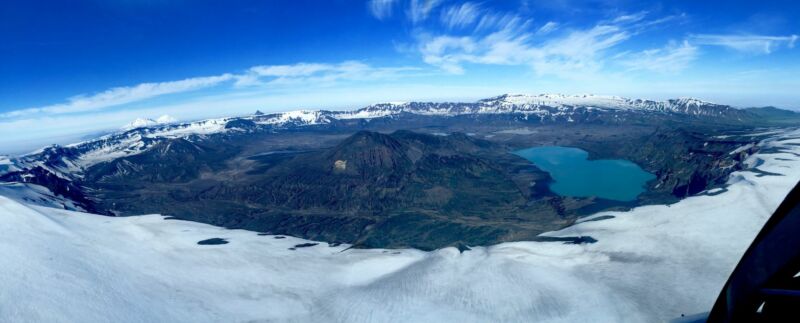
Enlarge / The 10km-wide caldera on Alaska’s Unmak Island formed during the 43 BCE Okmok II eruption. (credit: Kerry Key (Columbia University, New York, NY))
Roman writers described unusual weather and famines in the years following Julius Caesar’s assassination in 44 BCE, adding to the turbulence of the civil war that marked the transition from Republic to Empire. A recent study has now identified the culprit: a volcano 9,000km (6,000 miles) away in Alaska.
“Madness of wolves in winter”
“Madness of wolves in winter; in summer, no grain is harvested,” cried a voice from the Oracle of Apollo, in Delphi, in the months following Julius Caesar’s death. Ancient writers who survived the period describe cold weather, short growing seasons, and widespread famine around the Mediterranean, from Rome to Egypt. Throughout the empire, starvation led to disease and fueled growing civil unrest in an already turbulent time.
For years, modern historians have speculated that a major volcanic eruption might have been the culprit. An erupting volcano blasts sulfur dioxide high into the atmosphere. As the sulfur dioxide spreads out in the stratosphere, chemical reactions turn it into other sulfur compounds that reflect solar radiation, blocking the Sun’s light and warmth. Huge swaths of the planet turn colder, often continents away from the eruption.
Read 17 remaining paragraphs | Comments
Source: Ars Technica – The volcano that caused famines in ancient Rome? It was in Alaska
